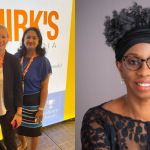
New Important Trends in Market Research: Takeaways from The Research Alliance
This fall, Bazis Group partners, Tatiana Barakshina and Mikhail Ziskelevich, participated in the annual Research Alliance meeting, a gathering of several dozen of our market research partners from around the world. The meeting was held in Gothenburg, Sweden, hosted by one of our members of the Alliance, Intermetra Business & Market Research
Traditionally, TRA annual meetings focus on country-specific research industry reviews, giving members a sense of global industry pulse. This year, too, TRA members discussed some of the biggest research trends they’ve noticed in the market research community. We wanted to share a couple of those research trends here on our blog.
Understanding sensory research and the role it plays in market research
Sensory research applies principles of experimental design and statistical analysis to the use of human senses to evaluate consumer products. As researchers, we test products — mostly Consumer non-durables, such as food and drinks — on the participants and record their responses. While a niche service within mainstream market research, sensory research consultancies are essential for many global FMCG producers, such as Unilever.
Haystack International is a multisensory research consultancy headquartered in Belgium that attended the Research Alliance meeting and presented their approach to sensory research. Here is a bit about how they approach sensory research: Haystack “looks at a consumer experience, a product innovation, pack, communication or shop from a multi-sensorial perspective.” Haystack hones in on the “interaction of all senses,” linking perceptions to decision-making in real-life. “As a result, all sensorial cords have to be struck in a harmonious way to end up as a real symphony in order to create emotional impact.” This interaction and capturing it is dubbed the “Symphony of Senses.”
Learn more about sensory research and testing by visiting the website for the Society of Sensory Professionals.
Discussing increasing role of service design in market research
A second research trend discussed during the annual meeting was service design and its role as a discipline in research. Service design takes a customer-driven approach to developing new services. It draws on things like user experience, marketing and project management to optimize new services. Service design logic essentially makes the claim that whatever a consumer buys, they are ultimately buying a service. So, even when someone purchases a sandwich from a restaurant they like, while they are buying a product they can literally consume, it is the overall service they are ultimately purchasing.
Why do companies leverage service design firms and consultants when conducting market research? According to the Service Design Network, service design methodologies help create service that is user-friendly, competitive and relevant to customers.
Birgit Mager, president of the Global Service Design Network and Service Design Professor at Köln International School of Design (KISD) in Cologne, Germany, has produced some great content on service design if you’d like to dig deeper.
Want to learn more about The Research Alliance and receive regular updates about research trends and other relevant topics? Join our LinkedIn group or email Tatiana directly at tvb@bazisamericas.com if you’re interested in talking to one of the core members.



